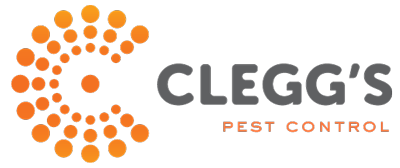Drywood Termites in North Carolina
Protecting your home is about more than shielding the exterior from cosmetic damage; you must also make sure your foundation is protected as well. One major threat to your home is termites. There are two major types of termites to be aware of when it comes to protecting your foundation: subterranean and drywood termites.
Drywood termites in particular can cause quite a bit of damage given how often they go undetected. Once they invade a home, they have the ability to disperse throughout all the rooms on all the floors rather quickly. That’s why it’s so important to learn the warning signs of a drywood termite infestation so you can detect a problem before it ends up costing you too much money. At Clegg’s Pest Control, we can help you treat an infestation as well as identify when one has occurred.
Identifying Drywood Termites
Drywood termites are identified by their “swarmers,” or wings. These swarmers can measure up to 12 millimeters in length. They are usually light brown to clear in color and have very large mandibles with teeth. Drywood termites are mostly found in highly wooded areas and need very little moisture to survive. Once they are mature, they will begin to reproduce and then leave the colony to form other colonies. In addition to moisture, drywood termites also do not need soil and will spread rather quickly from room to room once they have infiltrated your home.
Signs of a Drywood Termite Infestation
Drywood termites can be incredibly hard to detect since they tend to live in the wood they are feeding on. However, there are still some signs you can look for as you are determining whether or not you are dealing with drywood termites. Swarms tend to form once or twice a year and will emerge to alert you of a problem.
You may also find discarded termite wings throughout your home. If you find several wings of the same size near a window sill or light source, this could be a sign of a drywood termite infestation. Another sign of a drywood termite infestation is the appearance of feces. You may also notice some general signs of a termite infestation, such as bubbling or peeling paint or a hollow sound when you tap on a wall.
Drywood Termite Prevention and Treatment
If you notice any of the above signs of a drywood termite infestation, it is best to call the professionals at your local Clegg’s Pest Control Branch to treat your home. Our trained technicians will set up a free initial inspection to identify the root of the problem and begin formulating a treatment plan. After treatment, we recommend scheduling regular inspections to prevent a problem from occurring again.
Schedule Drywood Termite Control Services From Cleggs Today!
When you find yourself with a drywood termite infestation or any other pest issue, contact the professionals at Clegg’s Pest Control. We’ll even set you up with a free initial inspection prior to coming up with a treatment plan! Call us today to start living a pest-free life with Clegg’s Pest Control.

